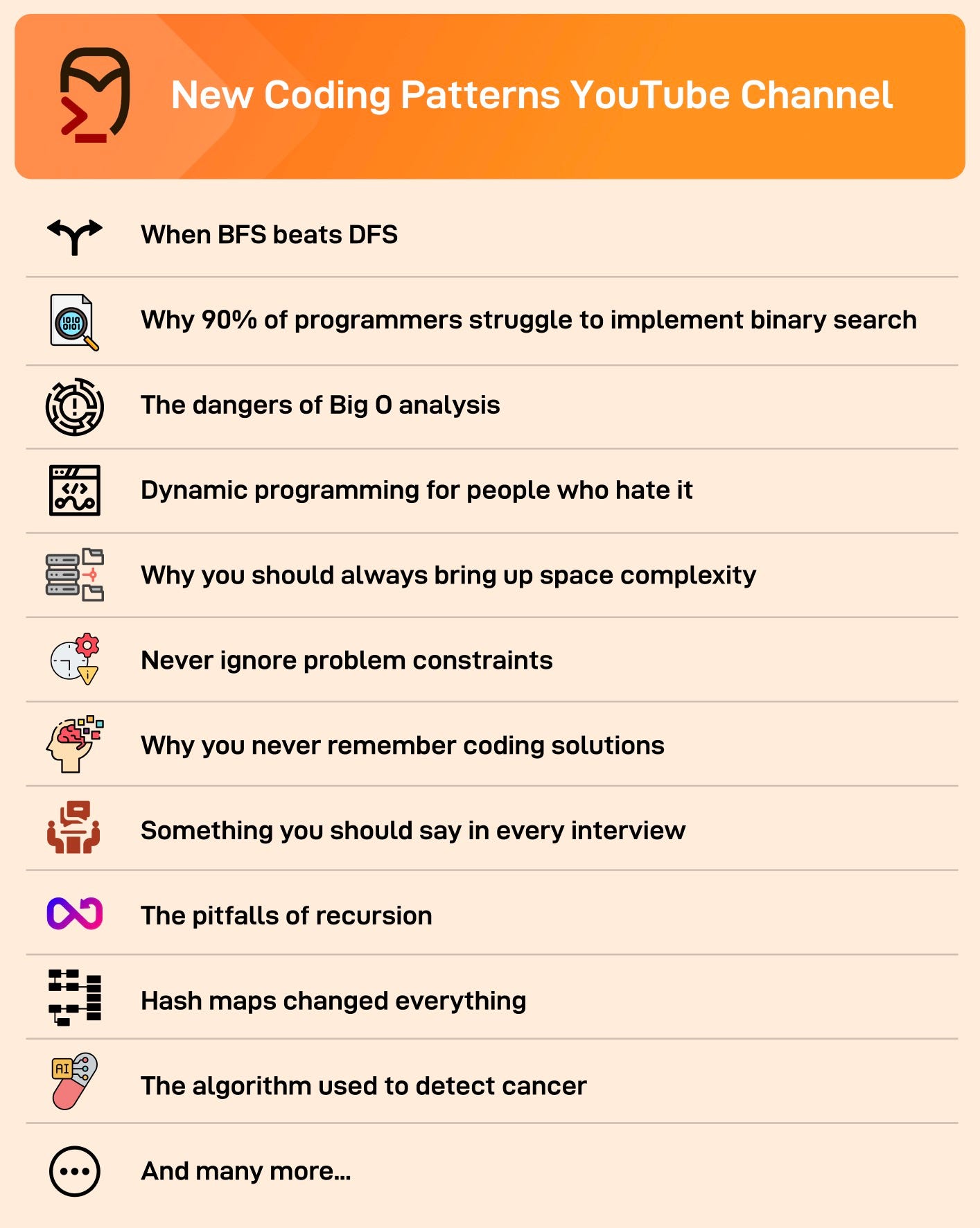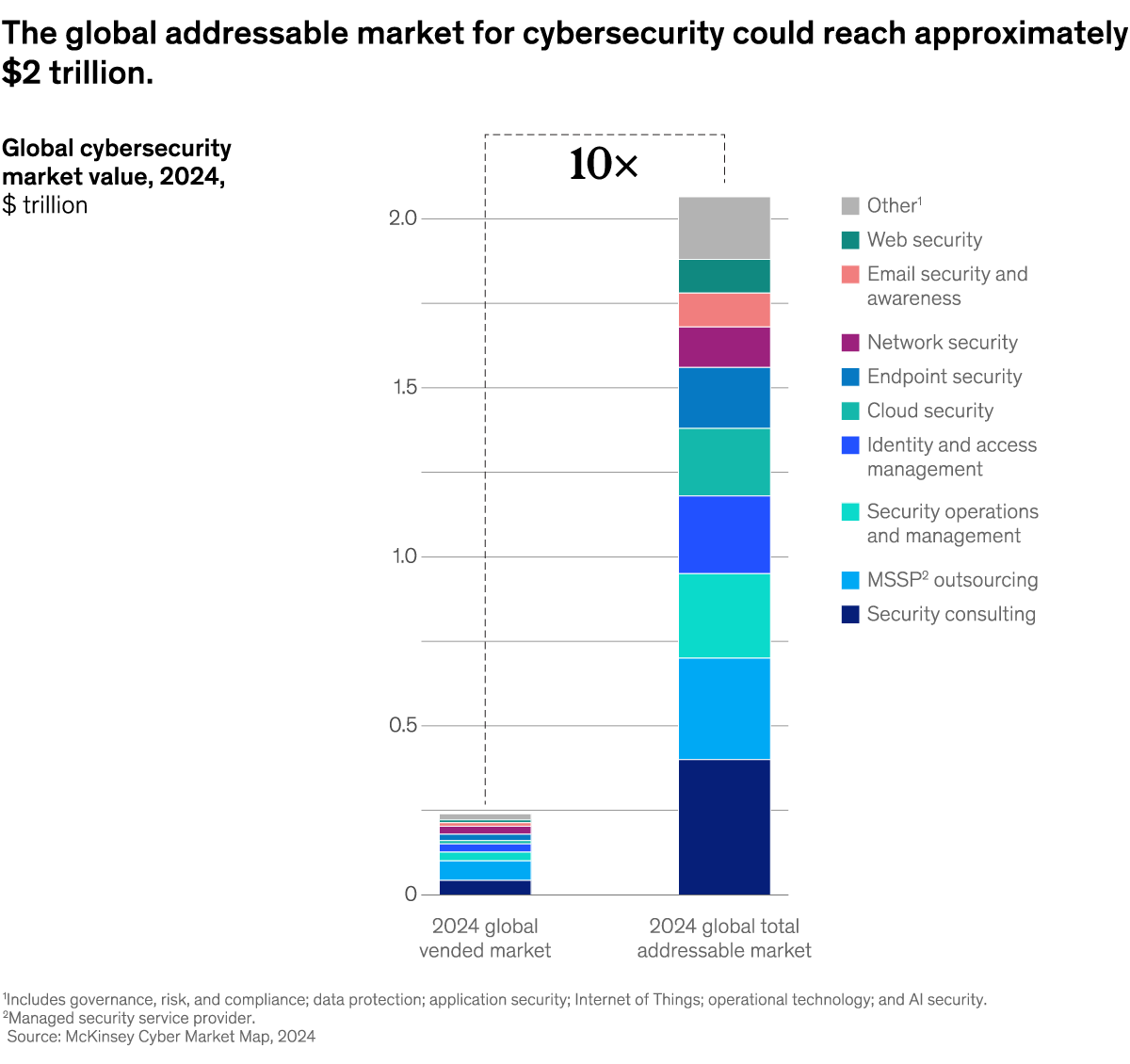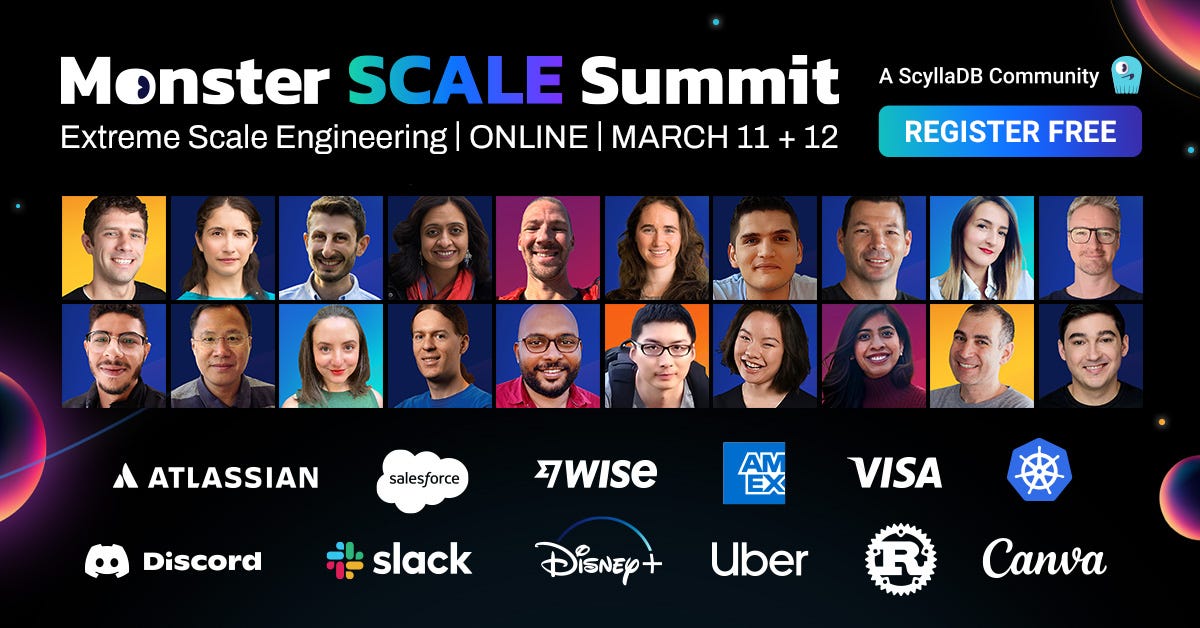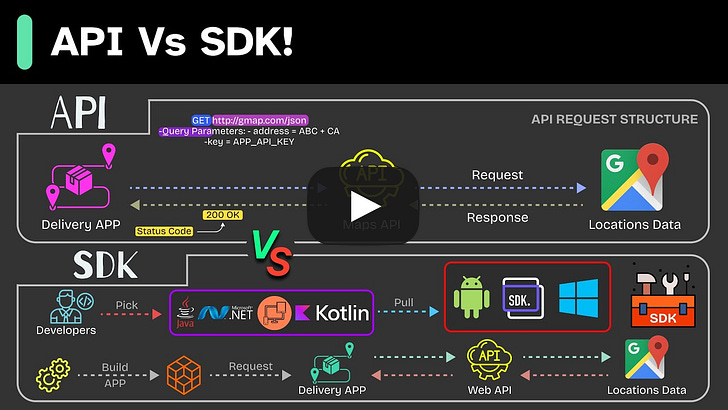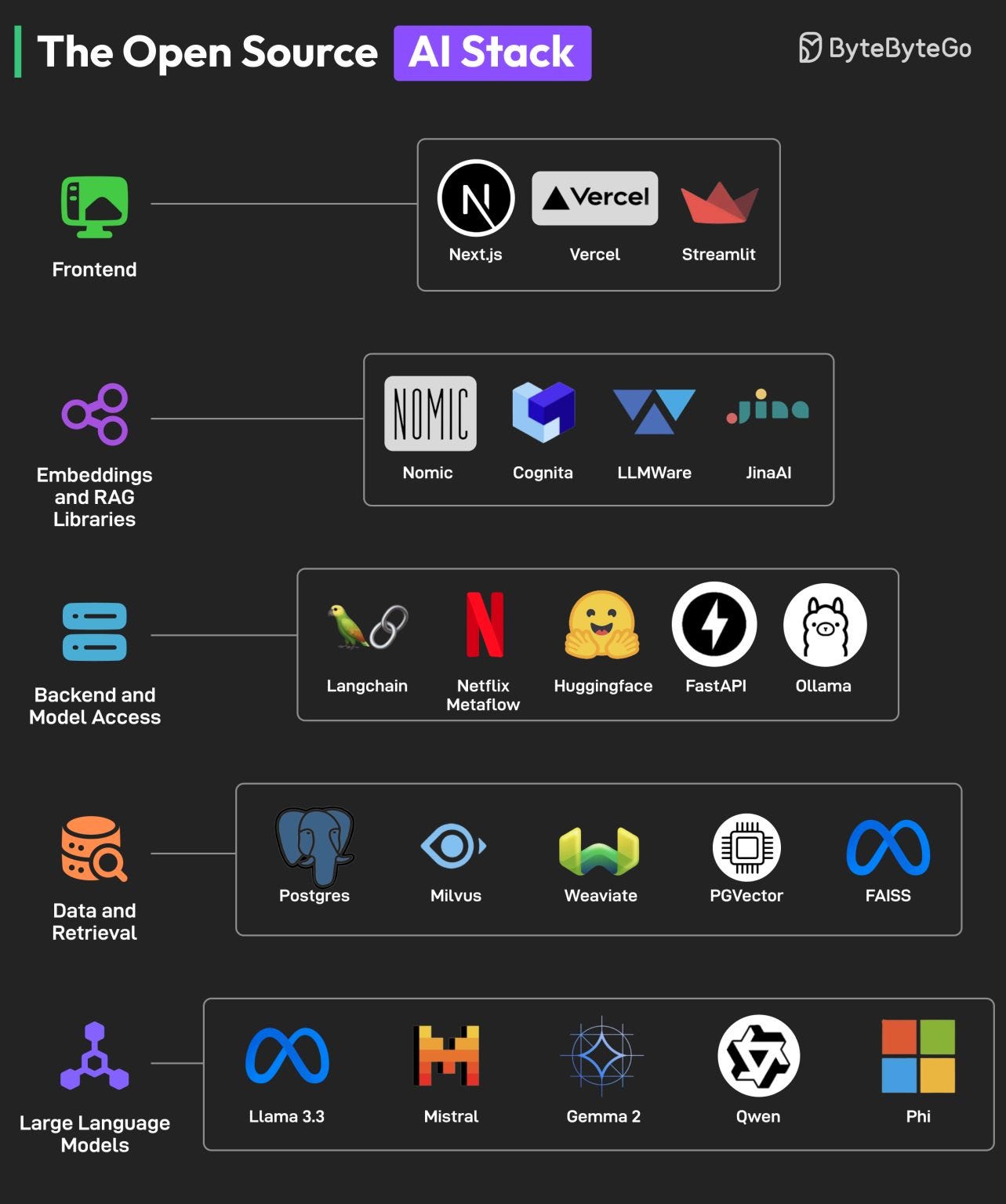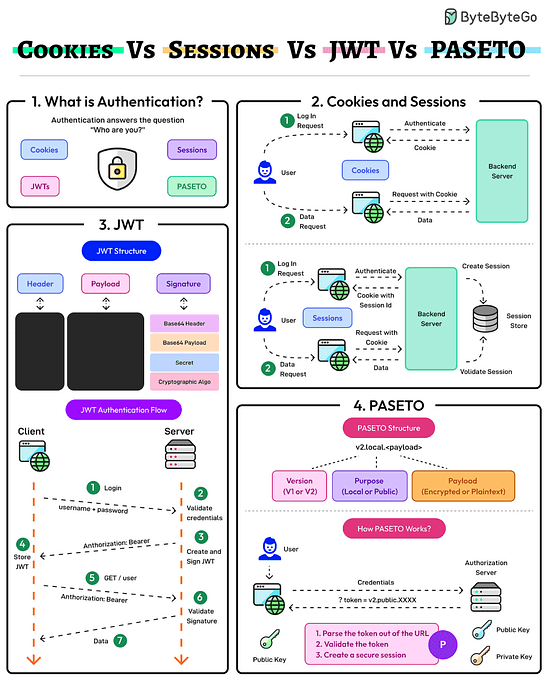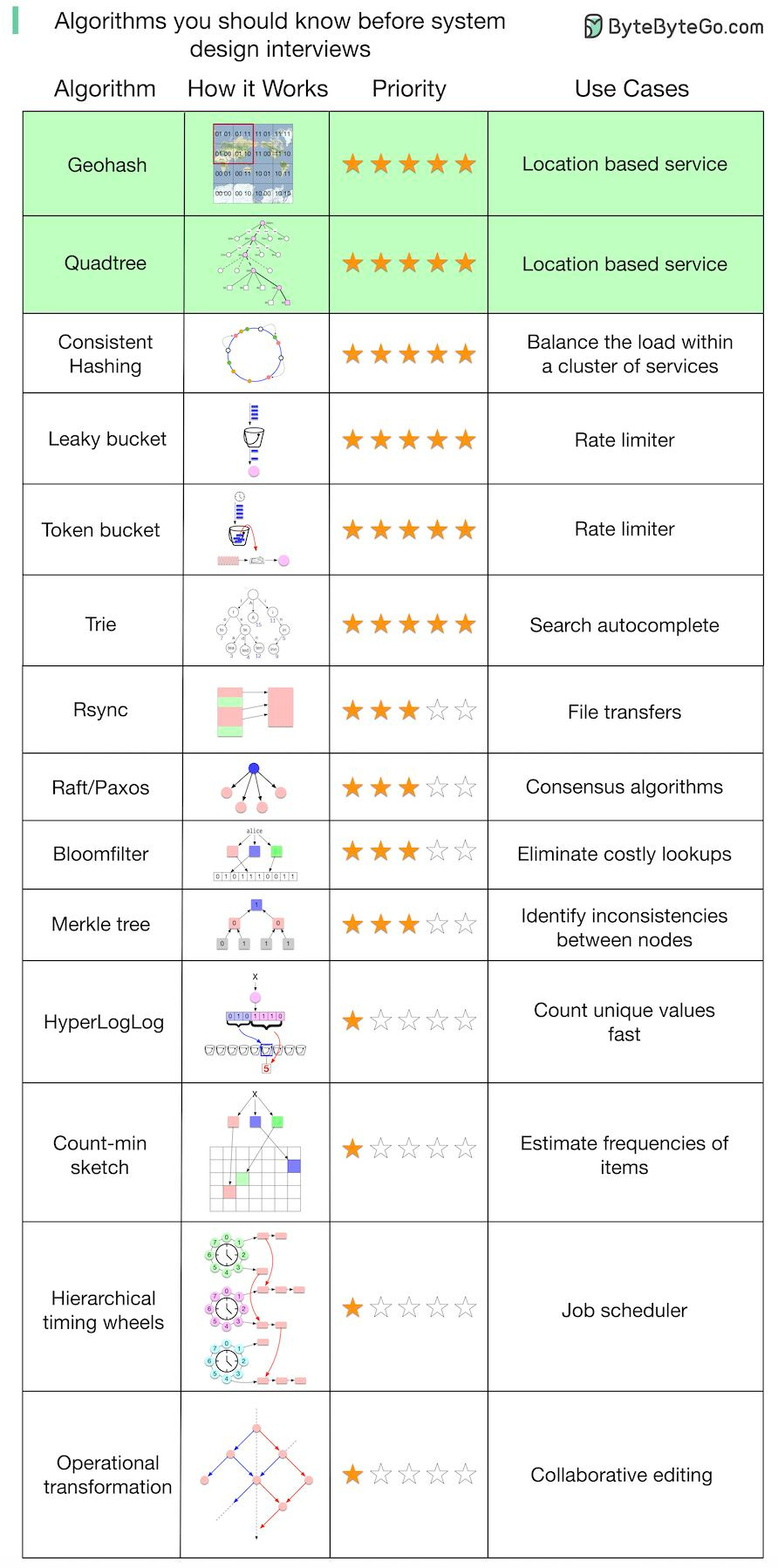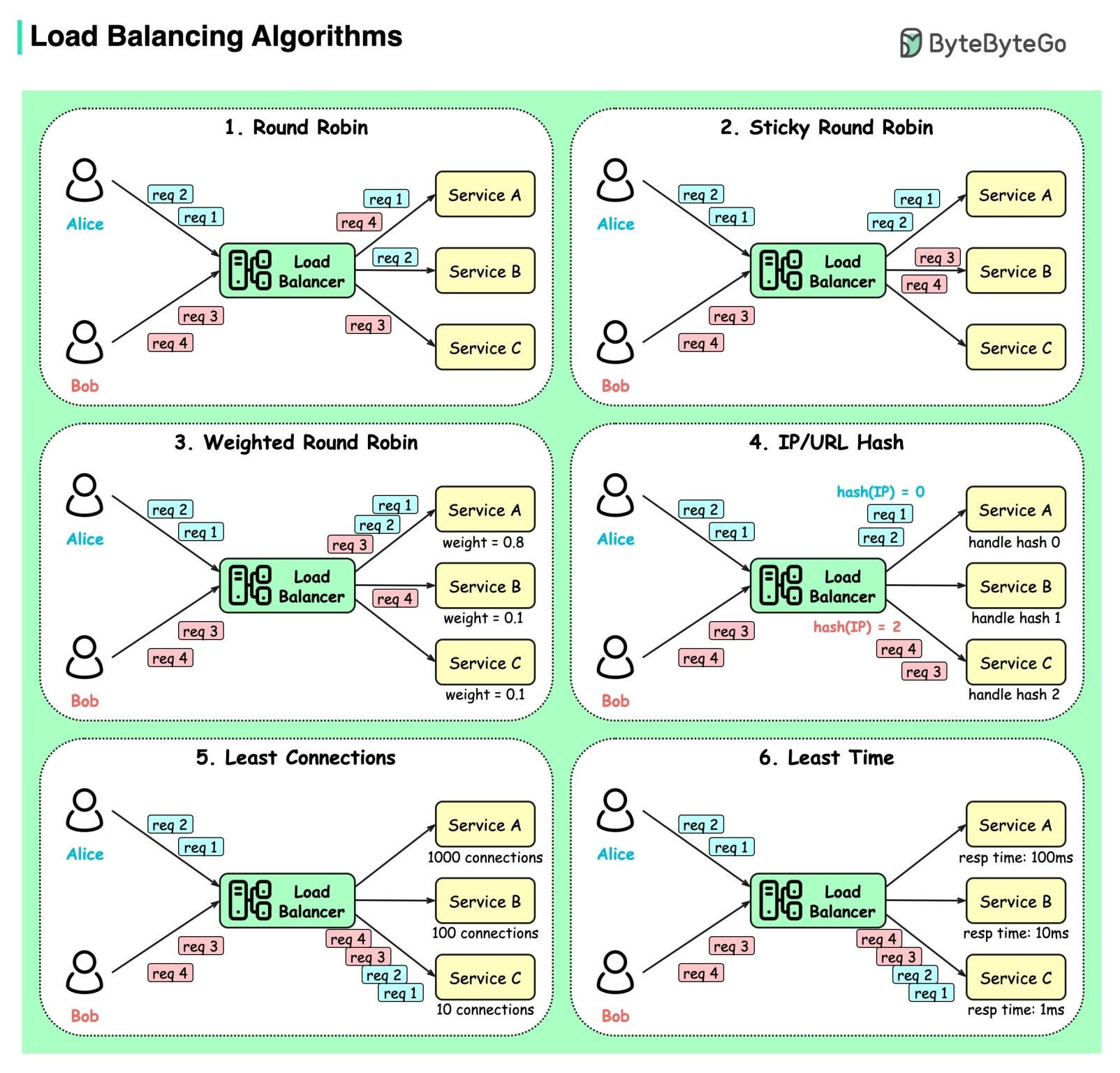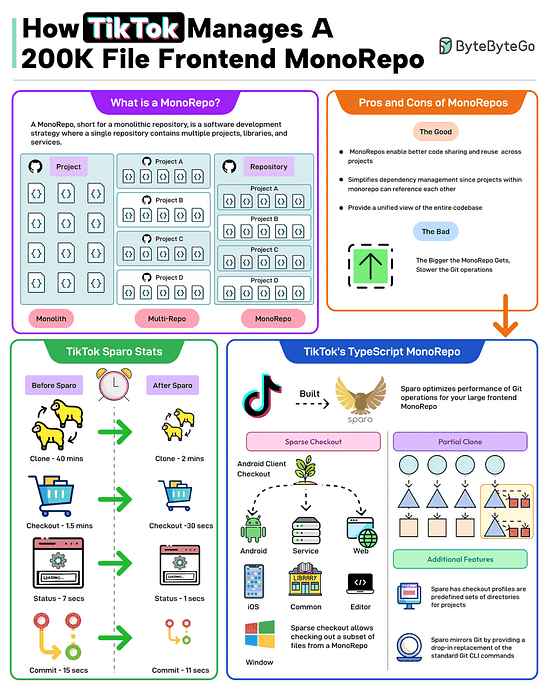Archives
- By thread 5363
-
By date
- June 2021 10
- July 2021 6
- August 2021 20
- September 2021 21
- October 2021 48
- November 2021 40
- December 2021 23
- January 2022 46
- February 2022 80
- March 2022 109
- April 2022 100
- May 2022 97
- June 2022 105
- July 2022 82
- August 2022 95
- September 2022 103
- October 2022 117
- November 2022 115
- December 2022 102
- January 2023 88
- February 2023 90
- March 2023 116
- April 2023 97
- May 2023 159
- June 2023 145
- July 2023 120
- August 2023 90
- September 2023 102
- October 2023 106
- November 2023 100
- December 2023 74
- January 2024 75
- February 2024 75
- March 2024 78
- April 2024 74
- May 2024 108
- June 2024 98
- July 2024 116
- August 2024 134
- September 2024 130
- October 2024 141
- November 2024 171
- December 2024 115
- January 2025 216
- February 2025 140
- March 2025 220
- April 2025 233
- May 2025 239
- June 2025 303
- July 2025 176
-
Our New Coding Patterns YouTube channel
Our New Coding Patterns YouTube channel
Our New Coding Patterns YouTube channel͏ ͏ ͏ ͏ ͏ ͏ ͏ ͏ ͏ ͏ ͏ ͏ ͏ ͏ ͏ ͏ ͏ ͏ ͏ ͏ ͏ ͏ ͏ ͏ ͏ ͏ ͏ ͏ ͏ ͏ ͏ ͏ ͏ ͏ ͏ ͏ ͏ ͏ ͏ ͏ ͏ ͏ ͏ ͏ ͏ ͏ ͏ ͏ ͏ ͏ ͏ ͏ ͏ ͏ ͏ ͏ ͏ ͏ ͏ ͏ ͏ ͏ ͏ ͏ ͏ ͏ ͏ ͏ ͏ ͏ ͏ ͏ ͏ ͏ ͏ ͏ ͏ ͏ ͏ ͏ ͏ ͏ ͏ ͏ ͏ ͏ ͏ ͏ ͏ ͏ ͏ ͏ ͏ ͏ ͏ ͏ ͏ ͏ ͏ ͏ ͏ ͏ ͏ ͏ ͏ ͏ ͏ ͏ ͏ ͏ ͏ ͏ ͏ ͏ ͏ ͏ ͏ ͏ ͏ ͏ ͏ ͏ ͏ ͏ ͏ ͏ ͏ ͏ ͏ ͏ ͏ ͏ ͏ ͏ ͏ ͏ ͏ ͏ ͏ ͏ ͏ ͏ ͏ ͏ ͏ ͏ ͏ ͏ ͏ ͏ ͏ ͏ ͏ ͏ ͏ ͏ ͏ ͏ ͏ ͏ ͏ ͏ ͏ ͏ ͏ ͏ ͏ ͏ ͏ ͏ ͏ ͏ ͏ ͏ ͏ ͏ ͏ ͏ ͏ ͏ ͏ ͏ ͏ ͏ ͏ ͏ ͏ ͏ ͏ ͏ ͏ ͏ ͏ ͏ ͏ ͏ ͏ ͏ ͏ ͏ Forwarded this email? Subscribe here for moreOur New Coding Patterns YouTube channel
BIG announcement: we’ve launched a new YouTube channel! – Coding Patterns
The first video is already live, and we'll aim to post new videos fortnightly.
This channel will be run by my colleague Shaun Gunawardane.
Our goal is to provide high-quality, entertaining explanations on coding patterns, and interview tips, without making you feel like you’re stuck in a boring lecture. Whether you’re prepping for a big coding interview, sharpening your problem-solving skills, or just looking for something fun to watch during your lunch break, this channel has you covered.
Here's a sneak peak into some titles you might see in the future:
- When BFS beats DFS
- The dangers of Big O analysis
- Dynamic programming for people who hate it
- Why you should always bring up space complexity
- Never ignore problem constraints
- Why you never remember coding solutions
- Something you should say in every interview
- The pitfalls of recursion
- Hash maps changed everything
- The algorithm used to detect cancer
Like
Comment
Restack
© 2025 ByteByteGo
548 Market Street PMB 72296, San Francisco, CA 94104
Unsubscribe
by "ByteByteGo" <bytebytego@substack.com> - 11:36 - 20 Jan 2025 -
A leader’s guide to the fastest-growing industries
Leading Off
Conquer the competition
by "McKinsey Leading Off" <publishing@email.mckinsey.com> - 04:57 - 20 Jan 2025 -
Palestra Viktory - soluzione di pagamento semplice
La soluzione di pagamento digitale di Qomodo si integra facilmente con i sistemi della tua palestra. Ottieni un immediato miglioramento del flusso di cassa senza processi complessi. I tuoi clienti godono di opzioni di pagamento flessibili per abbonamenti e servizi.
Saresti interessato a programmare una chiamata di 10 minuti per esplorare questa opportunità?
Questo sarà il mio messaggio finale. Sentiti libero di contattarmi se migliorare le opzioni di pagamento diventa una priorità.
by gianluca@smartqomodo.com - 04:52 - 20 Jan 2025 -
[MS part 5 of 5] Your Path to Success
Get access to the full Marketing Secrets trilogy + a special bonus to supercharge your success!I’ve been telling you all about my Marketing Secrets trilogy this week.
If there’s ONE thing to take from it…
It’s that every single successful person has come up against the same challenges as you and then found a way to keep moving forwards.
Most of the time they discovered a ‘secret’ from someone who had gone before them.
And that secret changed everything…
Each book in the Marketing Secrets trilogy is packed full of secrets.
- DotCom Secrets teaches you to build profitable sales funnels
- Expert Secrets teaches you to hone your messaging
-
Traffic Secrets teaches you win new customers
Today I want to give you an offer to get ALL THREE BOOKS for an amazing price!
And one more thing.
Included in the bundle is a workbook called Unlock the Secrets which you will fill out as you go along.
Unlock the Secrets is your path to success.
You can keep coming back to it to stay focused on your offer, your message, your strategy and a whole bunch of other things that point the way to success.
If you want to grow your business…
If you want to take control of your own sales funnel…
If you want to change your life…
Then get this offer today!
You can buy the ‘Secrets Trilogy’ here.
I’m so excited to see how much success it will bring you.
Talk tomorrow,
Russell Brunson
© Etison LLC
By reading this, you agree to all of the following: You understand this to be an expression of opinions and not professional advice. You are solely responsible for the use of any content and hold Etison LLC and all members and affiliates harmless in any event or claim.
If you purchase anything through a link in this email, you should assume that we have an affiliate relationship with the company providing the product or service that you purchase, and that we will be paid in some way. We recommend that you do your own independent research before purchasing anything.
Copyright © 2018+ Etison LLC. All Rights Reserved.
To make sure you keep getting these emails, please add us to your address book or whitelist us. If you don't want to receive any other emails, click on the unsubscribe link below.
Marketing Secrets
3443 W Bavaria St
Eagle, ID 83616
United States
by "Russell Brunson" <newsletter@marketingsecrets.com> - 03:44 - 20 Jan 2025 - DotCom Secrets teaches you to build profitable sales funnels
-
Iapple international | EDB | Discovery call
Iapple international | EDB | Discovery callHi Sir Abul,
I hope you are doing well. This is a gentle reminder for today's call with EDB. Call will start at 3.00 PM Thailand time.
Please use the following link to join the discussion: https://enterprisedb.zoom.us/j/5416180431
Looking forward to our discussion.
Best,
Ganesh KaleIapple international | EDB | Discovery callMonday Jan 20, 2025 ⋅ 1:30pm – 2:15pm (India Standard Time - Kolkata)If the time is not suitable for you, click here to reschedule the meetingDear Sir Md Abul Khayer,
Thank you for your time on the call earlier. I apologize for the inconvenience, but I need to reschedule our call to Monday at 3:00 PM Thailand time. Please find the updated invitation attached.
To recap our previous discussion:
- You are looking to set up replication between two databases.
- You are interested in understanding the High Availability (HA) options available in EDB PostgreSQL.
This upcoming call is scheduled to address your questions in detail and to provide you with pricing information.
Join Zoom Meeting:https://enterprisedb.zoom.us/j/5416180431
Meeting ID: 541 618 0431
Find your local number: https://enterprisedb.zoom.us/u/abxJm2UFM4I look forward to our discussion.
Best regards,
https://enterprisedb.zoom.us/j/5416180431Location
View mapGuests
by "Ganesh Kale" <ganesh.kale@enterprisedb.com> - 01:57 - 20 Jan 2025 -
What’s on the agenda for Davos 2025?
On McKinsey Perspectives
5 priorities Brought to you by Alex Panas, global leader of industries, & Axel Karlsson, global leader of functional practices and growth platforms
Welcome to the latest edition of Only McKinsey Perspectives. We hope you find our insights useful. Let us know what you think at Alex_Panas@McKinsey.com and Axel_Karlsson@McKinsey.com.
—Alex and Axel
•
Davos dialogues. The theme for the 2025 WEF meeting, “Collaboration for the Intelligent Age,” highlights the promise of technology and innovation to lift productivity and improve living standards amid increasing polarization. As a strategic partner of WEF, McKinsey has several Davos 2025 participants—senior partners Shelley Stewart III and Solveigh Hieronimus, among other experts—engaging delegates in constructive dialogues on the meeting’s five interconnected priorities.
•
Networking opportunities. With some 2,500 delegates and hundreds of others gathering in Davos—possibly making it the largest assembly of global decision makers all year—the opportunities for social interactions abound. “Davos is all about making those unusual connections,” says McKinsey senior partner Kate Smaje. “It’s often about those coincidental meetings that happen in the margins of the sessions.” From finding new sources of future growth to making progress on climate goals, consider the key priorities for Davos 2025.
—Edited by Belinda Yu, editor, Atlanta
This email contains information about McKinsey's research, insights, services, or events. By opening our emails or clicking on links, you agree to our use of cookies and web tracking technology. For more information on how we use and protect your information, please review our privacy policy.
You received this email because you subscribed to the Only McKinsey Perspectives newsletter, formerly known as Only McKinsey.
Copyright © 2025 | McKinsey & Company, 3 World Trade Center, 175 Greenwich Street, New York, NY 10007
by "Only McKinsey Perspectives" <publishing@email.mckinsey.com> - 01:33 - 20 Jan 2025 -
Re: Follow Up
Hi,
I wanted to check with you if you had time to go through my previous email.
Let me know your thoughts about acquiring this email list.
Regards,
Nora
------------------------------------------------------------------------------------------------------------------------------------
Hope you are doing well!
We have a Newly Updated OPT-IN database which will help you in reaching Beauty Industry Professionals across North America, UK, Europe and Global.
Job Titles:
· Beauty Industry Consultants
· Beauty Procurement/Purchasing
· Chain Salon Buyer
· Department Store Buyer
· Distributors / Drug Store Buyer
· Estheticians / Importers/Exporters
· International Buyer
· Investment Companies
· Licensed Makeup Artists
· Manufacturer- Representatives
· Manufacturers / Nail Technicians
· OTC/Beauty Retailers
· Packaging Vendors or Suppliers
· Pharmaceutical Companies
· Raw Material Suppliers
· Retail Buyers / Salon/Spa Managers
· Salon/Spa Owners / School Owners
· Specialty Store Buyer / Stylist/Cosmetologists
· Transportation/Shipping Logistics
· Venture Capitalists
The list includes Name, Company, Title, Employee & Revenue Size, Industry, SIC Code, Fax, Website, Physical Address, Phone Number and Verified Email Address.
Please fill in the below details and revert back on the same email, If you would like to add any other criteria (Which mean business to you).
Target Criteria:
· Industry you would like to reach: _______?
· Job title: _______?
· Geography: _______?
We can also help you in E mail and data appending solutions which can help in holding back your lost customers.
Look forward to hearing from you. Thanks!!
Warm Regards,
Nora Davis
Marketing Executive
------------------------------------------------------------------------------------------------------------------------------------------------------------------------------------------------------------------------------------------
We respect your privacy, if you want to remove it from this list. Please reply back with the subject line as “Leave Out”.
by "Nora Davis" <nora@medicaldataclub.com> - 10:55 - 19 Jan 2025 -
Your chance to win a VIP ticket to FHL ends tomorrow!!
tick tock… (before it’s too late)Call me Wonka… because there is a frenzy for this VIP “golden ticket” and rightly so, seeing as this opportunity is as RARE as they come.
This is the only chance RIGHT NOW, in the world, where you can meet and hang with me back-stage at FHL in Vegas!!
When you buy a ticket to FHL (before midnight tomorrow night), then you’ll be automatically entered to win a coveted VIP experience at the FINAL FHL!!!
But you have to act now!!! (So smack that link and grab your ticket before it’s too late…)
As a reminder, here’s everything that’s included with the VIP Golden Ticket experience:
Meet ME (Russell Brunson!!) backstage at FHL!! Join me backstage where we can chat, take pictures and get some autographs!
Get an exclusive behind-the-scenes look of the event!! Get the rare chance to see how the sausage is made – what it REALLY takes to put on a marketing event of this magnitude…
(Hint: it’s like launching a rocket while putting on a parade AND doing back-flips all at the same time…)
And keep in mind… with this being the last FHL… YOU WILL NOT get a chance like this ever again!!
Access to the VIP lounge!! Join the other VIP members in a more comfortable, less crowded setting where you can relax AND possibly discover some game-changing networking opportunities!
Reserved FRONT ROW seat for every single speaker!! Sit up close with TONY ROBBINS, Prince EA, Eileen Wilder, Dan Kennedy and literally every other FHL speaker as they deliver their life-changing presentations!!
Room UPGRADE to a SUITE* Spend the last ever Funnel Hacking Live in luxury and style in your very own hotel suite!! (*must have previously booked your standard room at Harrahs or the Linq)
And last but certainly not least…
Complimentary access to the ‘Day With Dan’ event!! On February 11th (the day BEFORE the official kick-off date of FHL)... the master of direct response marketing himself will be presenting LIVE three ‘mini events’ the day before FHL officially kicks off, and YOU will gain access to the ENTIRE DAY of unimaginably valuable information –Mini event #1 – “My Adventures In 40 Years In Direct Marketing And Their Eternal Lessons”
Mini event #2 – “Methodology That I Took From Varied Sources For MY ‘Success System’ That Never Fails”
Mini event #3 – “How To Develop Into ‘The Radical’ Who Attracts Exceptionally HIGH-VALUE Lifetime Customers”
Before retiring, Dan typically charged upwards of $20k for a full day of consulting/mentoring…
This chance to hear him share some of the most VALUABLE information he has to offer is a RARE, once in a lifetime opportunity that will likely not happen again (especially given the fact that Dan no longer agrees to live speaking engagements!)
RESERVE YOUR FHL TICKETS NOW TO BE ENTERED IN THE DRAWING FOR FREE →
If you’ve already purchased your FHL 10 ticket, good news! You’ve already been entered into the drawing for the VIP Golden Ticket Experience. No need to take any additional steps!
For those who are still on the fence OR simply plan on buying their tickets last minute…
Remember, the one lucky winner will be randomly drawn on January 27th!
But you MUST buy your ticket BEFORE MONDAY, JANUARY 20TH, @ 11:59 PM PT!!!
If you have not gotten your tickets before then, your name will NOT be in the drawing!
That means you need to grab your FHL ticket RIGHT NOW!
GET YOUR FHL TICKETS NOW TO BE AUTOMATICALLY ENTERED FOR THE VIP GOLDEN TICKET EXPERIENCE!! →
See you backstage!
Russell Brunson
P.S. Don’t forget, you’re just one funnel away…
© Etison LLC
By reading this, you agree to all of the following: You understand this to be an expression of opinions and not professional advice. You are solely responsible for the use of any content and hold Etison LLC and all members and affiliates harmless in any event or claim.
If you purchase anything through a link in this email, you should assume that we have an affiliate relationship with the company providing the product or service that you purchase, and that we will be paid in some way. We recommend that you do your own independent research before purchasing anything.
Copyright © 2018+ Etison LLC. All Rights Reserved.
To make sure you keep getting these emails, please add us to your address book or whitelist us. If you don't want to receive any other emails, click on the unsubscribe link below.
Etison LLC
3443 W Bavaria St
Eagle, ID 83616
United States
by "Russell Brunson" <noreply@clickfunnelsnotifications.com> - 06:13 - 19 Jan 2025 -
High-Quality Chenille String Curtains – Direct from the Manufacturer-HANSHENG/TAIYU
Dear Purchaser,
I hope this email finds you well.
We are a specialized manufacturer of chenille string curtains, offering a wide range of high-quality products at competitive prices. Our curtains are designed to enhance both residential and commercial spaces with their unique texture and style.
If you are interested in adding our products to your inventory, I would be happy to provide more information or discuss potential cooperation.
Looking forward to the possibility of working together.
Best regards,
Madelyn | Sales manager
by "sales4" <sales4@hanshengtextile.com> - 12:04 - 19 Jan 2025 -
High Quality Mobile Control Valve Manufacturer
Dear info,
Good morning!
Glad to know that you are the leading company in for hydraulic parts with high quality.
We are professional maufacturer of hydraulic control valves from 20lpm to 400lpm with monoblock and sectional type for options.
To enable you to get a good understanding of our quality and service,free samples could be sent on your request. In the next email, I will attach you the product catalogs. Please tell me what items are more salable for you.
Best regards,
Mellin Zang
Exp.Dep.Manager | Mob.:0086-18262815813
HUAI AN SHENG JIE HYDRAULIC MACHINERY CO.,LTD
Skype:Mellin Zang1213 | Email: mellin@sjhydraulic.com
Wechat | whatsapp: 0086-18262815813
Follow us: www.sjhydraulic.com
by "Sukaina Muscella" <muscellasukaina153@gmail.com> - 11:43 - 19 Jan 2025 -
Re: Wirie harness from China
Dear info,
Glad to learn you're on the market of Wiring harness products.
This is Allan from Shenzhen Jinfengsheng Electronic Co,.Ltd in China. JFS, founded in 2007, is a comprehensive enterprise with R&D production and sales. As a MANUFACTURER of high quality wire with competitive price! We supply Shield wire, High voltage wire, Silicone wire, Teflon wire, Flat ribbon wire, Terminal connector, Wiring harness and Various USB charge cable.
Quotation sheet will be provided at once if needed. Should you have any questions, please don't hesitate to contact me. FREE SAMPLES will be sent for your evaluation!
We're sure your any inquiry will get prompt attention.
Thanks in advance!
Best regards,
Allan
JFS Sales Team
by "Harbans Barroeta" <barroetaharbans@gmail.com> - 11:05 - 19 Jan 2025 -
Re: Cost please?
Hi,
I was going through your website, which isn't doing well because of some errors but has a lot of potential in your business.
We can place your website on Google's first page for your city or state.
May I send an SEO plan & error report?
Thank You
by "Angela Scott" <angelascott036@hotmail.com> - 09:30 - 19 Jan 2025 -
(MS: Part 4 of 5) The ‘South Col’ Route
As soon as one person climbed Mount Everest.. more than 6,300 people have achieved the same dream.Hey,
Do you know what happened after two mountaineers first climbed Mount Everest in 1953?
Climbing Everest went from an "impossible goal" to an "achievable goal," and more than 6,300 people have reached the summit since.
But here's something even more interesting.
Over 70% of people use the same 'South Col' route as the first successful climb. This concept is crucial.
I wrote all three books in my Marketing Secrets trilogy to be a 'South Col' path to success for people just like you.
Once you understand this idea, you'll never see challenges the same way again. I'm going to imprint this idea onto your mind today!
Your dream for your business might seem insurmountable, but entrepreneurs like me and thousands of others have faced the same challenges you're facing today.
We discovered the 'secrets' to get past them.
It's not about bragging; we got these 'secrets' from people who had already achieved the success we wanted!
You can find hundreds of these secrets—and the names of the people I learned them from—in each of the three books in my Marketing Secrets trilogy:
- **DotCom Secrets** will teach you how to build profitable sales funnels.
- **Expert Secrets** will teach you how to communicate with your audience.
- **Traffic Secrets** will teach you how to attract new customers.
But there's something else you need to know.
Getting back to Mount Everest... did you know that the majority of fatalities happen on the way back down?
I see this happen in business all the time.
If you make a bunch of money from an offer but then go months without making a dollar, you don't have a business yet!
Imagine getting a bunch of sales but nobody renews.
Imagine getting huge traffic from ads but then Facebook shuts your account down.
Imagine launching a brand-new product only to have a competitor steal your success. You've gotta come prepared.
That's why I also offer my Marketing Secrets trilogy in a single bundle, so you have all the secrets you need to face any challenge within arm's reach.
Okay, one more thing that's amazing about Everest. Do you know who’s climbed it the most times?
A Sherpa from Nepal named Kami Rita reached the summit for the 28th time in 2023! All his ascents came via the 'South Col' route.
This is super important—you've gotta be a 'Sherpa' if you really want to change your life with your business success.
Being a one-time climber isn't enough.
If you have a freak success but don't know how you got there, how are you going to do it again?
But now, imagine hitting your goals by following specific 'secrets'...
You've got a series of steps you can take to hit success again and again!
My Marketing Secrets books are full of doodles that make the ideas super simple to understand.
You can come back to them over and over again and get the same results.
Now, you can get each of the three books in my Marketing Secrets series for FREE (just cover shipping & handling).
You can choose the one you want here.
But tomorrow, I want to offer you all three books as a bundle for an amazing price.
PLUS, I'm going to give you a fourth book called *Unlock the Secrets,* which is like a supercharger for your success.
Look out for my email tomorrow! It's called [Part 5 of 5: Your Path to Success].
Talk tomorrow,
Russell Brunson
© Etison LLC
By reading this, you agree to all of the following: You understand this to be an expression of opinions and not professional advice. You are solely responsible for the use of any content and hold Etison LLC and all members and affiliates harmless in any event or claim.
If you purchase anything through a link in this email, you should assume that we have an affiliate relationship with the company providing the product or service that you purchase, and that we will be paid in some way. We recommend that you do your own independent research before purchasing anything.
Copyright © 2018+ Etison LLC. All Rights Reserved.
To make sure you keep getting these emails, please add us to your address book or whitelist us. If you don't want to receive any other emails, click on the unsubscribe link below.
Marketing Secrets
3443 W Bavaria St
Eagle, ID 83616
United States
by "Russell Brunson" <newsletter@marketingsecrets.com> - 03:44 - 19 Jan 2025 -
Did you grab your "golden ticket”?!? (FHL VIP for FREE!)
you may be outta luck though…The DEADLINE to enter the drawing for your chance to secure a VIP experience of Funnel Hacking LIVE for FREE is fast approaching (ends Monday night)!!
SECURE YOUR FHL TICKETS NOW TO BE AUTOMATICALLY ENTERED!! →
As a reminder, here’s everything that’s included with the VIP Golden Ticket experience:
Meet ME (Russell Brunson!!) backstage at FHL!! Join me backstage where we can chat, take pictures and get some autographs!
Get an exclusive behind-the-scenes look of the event!! Get the rare chance to see how the sausage is made – what it REALLY takes to put on a marketing event of this magnitude…
(Hint: it’s like launching a rocket while putting on a parade AND doing back-flips all at the same time…)
And keep in mind… with this being the last FHL… YOU WILL NOT get a chance like this ever again!!
Access to the VIP lounge!! Join the other VIP members in a more comfortable, less crowded setting where you can relax AND possibly discover some game-changing networking opportunities!
Reserved FRONT ROW seat for every single speaker!! Sit up close with TONY ROBBINS, Prince EA, Eileen Wilder, Dan Kennedy and literally every other FHL speaker as they deliver their life-changing presentations!!
Room UPGRADE to a SUITE* Spend the last ever Funnel Hacking Live in luxury and style in your very own hotel suite!! (*must have previously booked your standard room at Harrahs or the Linq)
And last but certainly not least…
Complimentary access to the ‘Day With Dan’ event!! On February 11th (the day BEFORE the official kick-off date of FHL)... the master of direct response marketing himself will be presenting LIVE three ‘mini events’ the day before FHL officially kicks off, and YOU will gain access to the ENTIRE DAY of unimaginably valuable information –Mini event #1 – “My Adventures In 40 Years In Direct Marketing And Their Eternal Lessons”
Mini event #2 – “Methodology That I Took From Varied Sources For MY ‘Success System’ That Never Fails”
Mini event #3 – “How To Develop Into ‘The Radical’ Who Attracts Exceptionally HIGH-VALUE Lifetime Customers”
Before retiring, Dan typically charged upwards of $20k for a full day of consulting/mentoring…
This chance to hear him share some of the most VALUABLE information he has to offer is a RARE, once in a lifetime opportunity that will likely not happen again (especially given the fact that Dan no longer agrees to live speaking engagements!)
RESERVE YOUR FHL TICKETS NOW TO BE ENTERED IN THE DRAWING FOR FREE →
If you’ve already purchased your FHL 10 ticket, good news! You’ve already been entered into the drawing for the VIP Golden Ticket Experience. No need to take any additional steps!
For those who are still on the fence OR simply plan on buying their tickets last minute…
Remember, the one lucky winner will be randomly drawn on January 27th!
But you MUST buy your ticket BEFORE MONDAY, JANUARY 20TH, @ 11:59 PM PT!!!
If you have not gotten your tickets before then, your name will NOT be in the drawing!
That means you need to grab your FHL ticket RIGHT NOW!
GET YOUR FHL TICKETS NOW TO BE AUTOMATICALLY ENTERED FOR THE VIP GOLDEN TICKET EXPERIENCE!! →
See you backstage!
Russell Brunson
P.S. Don’t forget, you’re just one funnel away…
© Etison LLC
By reading this, you agree to all of the following: You understand this to be an expression of opinions and not professional advice. You are solely responsible for the use of any content and hold Etison LLC and all members and affiliates harmless in any event or claim.
If you purchase anything through a link in this email, you should assume that we have an affiliate relationship with the company providing the product or service that you purchase, and that we will be paid in some way. We recommend that you do your own independent research before purchasing anything.
Copyright © 2018+ Etison LLC. All Rights Reserved.
To make sure you keep getting these emails, please add us to your address book or whitelist us. If you don't want to receive any other emails, click on the unsubscribe link below.
Etison LLC
3443 W Bavaria St
Eagle, ID 83616
United States
by "Russell Brunson" <noreply@clickfunnelsnotifications.com> - 08:03 - 18 Jan 2025 -
Greetings from Hangzhen Energy
Dear info,
I hope this message finds you well. I represent Zhejiang Hangzhen Energy Technology Company Limited, a leading provider of specialized equipment across multiple industries, including chemical, petrochemical, auxiliary machinery, and metallurgical sectors.
Our product range includes steam jet vacuum pumps, Roots vacuum pump units, automatic exhaust valves, VD/VOD/RH refining furnaces, and more. We are committed to delivering high-quality, efficient solutions that meet the unique demands of your operations.
I'd love to discuss how our products can benefit your operations. Please let me know if we can arrange further communication.
Best regards,
Xu Shangyong/Marketing Department
Zhejiang Hangzhen Energy Technology Company Limited.
Yuexiu Xinghui Middle, No. 723 Dayuan Road, Qingshanhu Street, Lin'an District, Hangzhou City, Zhejiang Province, China
www.hzvacuum.com
by "Mohr Dark" <darkmohr757@gmail.com> - 07:02 - 18 Jan 2025 -
The week in charts
The Week in Charts
Cybersecurity for AI, trade policy concerns, and more Share these insights
Did you enjoy this newsletter? Forward it to colleagues and friends so they can subscribe too. Was this issue forwarded to you? Sign up for it and sample our 40+ other free email subscriptions here.
This email contains information about McKinsey's research, insights, services, or events. By opening our emails or clicking on links, you agree to our use of cookies and web tracking technology. For more information on how we use and protect your information, please review our privacy policy.
You received this email because you subscribed to The Week in Charts newsletter.
Copyright © 2025 | McKinsey & Company, 3 World Trade Center, 175 Greenwich Street, New York, NY 10007
by "McKinsey Week in Charts" <publishing@email.mckinsey.com> - 03:02 - 18 Jan 2025 -
Where leadership development programs go wrong—and how to fix them
Avoid four key missteps Brought to you by Alex Panas, global leader of industries, & Axel Karlsson, global leader of functional practices and growth platforms
Welcome to the latest edition of McKinsey Classics. We hope you find our perspectives useful. Let us know what you think at Alex_Panas@McKinsey.com and Axel_Karlsson@McKinsey.com.
—Alex and Axel
January 2025
In honor of the 60th birthday of McKinsey Quarterly, the McKinsey Classics newsletter is dedicating a full year to enduring Quarterly articles that were ahead of their time. Enjoy, and check out other celebration highlights such as special themed issues and bonus digital features.
Next week, global leaders will convene in Davos, Switzerland, to attend the World Economic Forum’s Annual Meeting, with the goal of addressing some of the world’s most intractable problems. This year’s meeting will focus on a range of priorities for today’s organizations, and crucial among them is the development of human capital.
Now, more than ever, the world needs capable leaders. And therein lies the rub: Companies recognize the importance of high-performing leaders, but many struggle to develop their key talent. The reason? All too often, organizations succumb to four common mistakes in their leadership development efforts: They create one-size-fits-all training initiatives; they fail to balance off-site learning with real, on-the-job projects; they underestimate the behavioral changes needed to ensure the program’s success; and they don’t effectively track and measure leadership development over time.
Great leaders start with great leadership development. To learn more about the most common mistakes in these efforts—and how to avoid them—read our 2014 McKinsey Quarterly classic “Why leadership development programs fail.”Read our latest thinking on this classic topic

The art of 21st-century leadership: From succession planning to building a leadership factory
Succeeding in the 21st century demands high-performing teams—and equally stellar leaders to lead them. Companies that treat leadership development as a core capability can raise their overall resilience and better withstand disruption. To find out how organizations can build their own leadership factories to effectively develop the next generation of managers, read our latest insights on the topic from Bob Sternfels, Daniel Pacthod, and Kurt Strovink, with Wyman Howard.
— Edited by Drew Holzfeind, editor, Chicago
Is there a classic business topic you’d like us to feature? Send us an email—we’d love to hear from you.
Share these insights
Did you enjoy this newsletter? Forward it to colleagues and friends so they can subscribe too. Was this issue forwarded to you? Sign up for it and sample our 40+ other free email subscriptions here.
This email contains information about McKinsey's research, insights, services, or events. By opening our emails or clicking on links, you agree to our use of cookies and web tracking technology. For more information on how we use and protect your information, please review our privacy policy.
You received this email because you subscribed to our McKinsey Classics newsletter.
Copyright © 2025 | McKinsey & Company, 3 World Trade Center, 175 Greenwich Street, New York, NY 10007
by "McKinsey Classics" <publishing@email.mckinsey.com> - 12:37 - 18 Jan 2025 -
EP146: The Open Source AI Stack
EP146: The Open Source AI Stack
You don’t need to spend a fortune to build an AI application.͏ ͏ ͏ ͏ ͏ ͏ ͏ ͏ ͏ ͏ ͏ ͏ ͏ ͏ ͏ ͏ ͏ ͏ ͏ ͏ ͏ ͏ ͏ ͏ ͏ ͏ ͏ ͏ ͏ ͏ ͏ ͏ ͏ ͏ ͏ ͏ ͏ ͏ ͏ ͏ ͏ ͏ ͏ ͏ ͏ ͏ ͏ ͏ ͏ ͏ ͏ ͏ ͏ ͏ ͏ ͏ ͏ ͏ ͏ ͏ ͏ ͏ ͏ ͏ ͏ ͏ ͏ ͏ ͏ ͏ ͏ ͏ ͏ ͏ ͏ ͏ ͏ ͏ ͏ ͏ ͏ ͏ ͏ ͏ ͏ ͏ ͏ ͏ ͏ ͏ ͏ ͏ ͏ ͏ ͏ ͏ ͏ ͏ ͏ ͏ ͏ ͏ ͏ ͏ ͏ ͏ ͏ ͏ ͏ ͏ ͏ ͏ ͏ ͏ ͏ ͏ ͏ ͏ ͏ ͏ ͏ ͏ ͏ ͏ ͏ ͏ ͏ ͏ ͏ ͏ ͏ ͏ ͏ ͏ ͏ ͏ ͏ ͏ ͏ ͏ ͏ ͏ ͏ ͏ ͏ ͏ ͏ ͏ ͏ ͏ ͏ ͏ ͏ ͏ ͏ ͏ ͏ ͏ ͏ ͏ ͏ ͏ ͏ ͏ ͏ ͏ ͏ ͏ ͏ ͏ ͏ ͏ ͏ ͏ ͏ ͏ ͏ ͏ ͏ ͏ ͏ ͏ ͏ ͏ ͏ ͏ ͏ ͏ ͏ ͏ ͏ ͏ ͏ ͏ ͏ ͏ ͏ ͏ ͏ ͏ Forwarded this email? Subscribe here for moreYour free ticket to Monster SCALE Summit is waiting — 60+ engineering talks on data-intensive applications (Sponsored)
Monster SCALE Summit is a new virtual conference that’s all about extreme-scale engineering and data-intensive applications. Engineers from Discord, Disney+, Slack, Canva, Uber, Cloudflare, Wise, Atlassian + more will be sharing 60+ talks on topics like:
Distributed databases
Streaming and real-time processing
Intriguing system designs
Approaches to a massive scaling challenge
Methods for balancing latency/concurrency/throughput
Infrastructure built for unprecedented demands.
Don't miss this chance to connect with 15K of your peers designing, implementing, and optimizing data-intensive applications – for free, from anywhere.
This week’s system design refresher:
API Vs SDK! What's the difference? (Youtube video)
The Open Source AI Stack
Cookies Vs Sessions Vs JWT Vs PASETO
Algorithms you should know before taking System Design Interviews
Top 6 Load Balancing Algorithms
How TikTok Manages a 200K File Frontend MonoRepo?
SPONSOR US
API Vs SDK! What's the difference?
The Open Source AI Stack
You don’t need to spend a fortune to build an AI application. The best AI developer tools are open-source, and an excellent ecosystem is evolving that can make AI accessible to everyone.
The key components of this open-source AI stack are as follows:Frontend
To build beautiful AI UIs, frameworks like NextJS and Streamlit are extremely useful. Also, Vercel can help with deployment.Embeddings and RAG libraries
Embedding models and RAG libraries like Nomic, JinaAI, Cognito, and LLMAware help developers build accurate search and RAG features.Backend and Model Access
For backend development, developers can rely on frameworks like FastAPI, Langchain, and Netflix Metaflow. Options like Ollama and Huggingface are available for model access.Data and Retrieval
For data storage and retrieval, several options like Postgres, Milvus, Weaviate, PGVector, and FAISS are available.Large-Language Models
Based on performance benchmarks, open-source models like Llama, Mistral, Qwen, Phi, and Gemma are great alternatives to proprietary LLMs like GPT and Claude.
Over to you: Which other tool will you add to the Open Source AI Stack?
Cookies Vs Sessions Vs JWT Vs PASETO
Authentication ensures that only authorized users gain access to an application’s resources. It answers the question of the user’s identity i.e. “Who are you?”
The modern authentication landscape has multiple approaches: Cookies, Sessions, JWTs, and PASETO. Here’s what they mean:Cookies and Sessions
Cookies and sessions are authentication mechanisms where session data is stored on the server and referenced via a client-side cookie.
Sessions are ideal for applications requiring strict server-side control over user data. On the downside, sessions may face scalability challenges in distributed systems.JWT
JSON Web Token (JWT) is a stateless, self-contained authentication method that stores all user data within the token.
JWTs are highly scalable but require careful handling to mitigate the chances of token theft and manage token expiration.PASETO
Platform-Agnostic Security Tokens or PASETO improve upon JWT by enforcing stronger cryptographic defaults and eliminating algorithmic vulnerabilities.
PASETO simplifies token implementation by avoiding the risks associated with misconfiguration.
Over to you: Which authentication approach have you used?
Algorithms you should know before taking System Design Interviews
What are some of the algorithms you should know before taking system design interviews?
I put together a list and explained why they are important. Those algorithms are not only useful for interviews but good to understand for any software engineer.
One thing to keep in mind is that understanding “how those algorithms are used in real-world systems” is generally more important than the implementation details in a system design interview.
What do the stars mean in the diagram?
It’s very difficult to rank algorithms by importance objectively. I’m open to suggestions and making adjustments.
Five-star: Very important. Try to understand how it works and why.
Three-star: Important to some extent. You may not need to know the implementation details.
One-star: Advanced. Good to know for senior candidates.
Over to you: did I miss anything important on the list? Which ones do you know and which you don’t?Top 6 Load Balancing Algorithms
Static Algorithms
1. Round robin
The client requests are sent to different service instances in sequential order. The services are usually required to be stateless.
2. Sticky round-robin
This is an improvement of the round-robin algorithm. If Alice’s first request goes to service A, the following requests go to service A as well.
3. Weighted round-robin
The admin can specify the weight for each service. The ones with a higher weight handle more requests than others.
4. Hash
This algorithm applies a hash function on the incoming requests’ IP or URL. The requests are routed to relevant instances based on the hash function result.Dynamic Algorithms
5. Least connections
A new request is sent to the service instance with the least concurrent connections.
6. Least response time
A new request is sent to the service instance with the fastest response time.
How TikTok Manages a 200K File Frontend MonoRepo?
A MonoRepo, short for a monolithic repository, is a software development strategy where a single repository contains multiple projects, libraries, and services.
The good parts of a MonoRepo are:Better code sharing
Simplified dependency management
A unified view of the code base
However, the bigger the MonoRepo gets, the slower the various Git operations.
TikTok faced a similar change with its frontend TypeScript MonoRepo with 200K files.
To deal with this, TikTok built a tool named Sparo that optimizes the performance of Git operations for large frontend MonoRepos.
Sparo dramatically improved the performance of Git operations. Some stats are as followsGit clone time went from 40 mins to just 2 mins.
Checkout went from 1.5 minutes to 30 seconds.
Status went from 7 seconds to 1 second.
Git commit time went from 15 seconds to 11 seconds.
Over to you: Have you used MonoRepos in your projects?
SPONSOR US
Get your product in front of more than 1,000,000 tech professionals.
Our newsletter puts your products and services directly in front of an audience that matters - hundreds of thousands of engineering leaders and senior engineers - who have influence over significant tech decisions and big purchases.
Space Fills Up Fast - Reserve Today
Ad spots typically sell out about 4 weeks in advance. To ensure your ad reaches this influential audience, reserve your space now by emailing sponsorship@bytebytego.com.
Like
Comment
Restack
© 2025 ByteByteGo
548 Market Street PMB 72296, San Francisco, CA 94104
Unsubscribe
by "ByteByteGo" <bytebytego@substack.com> - 11:36 - 18 Jan 2025 -
[MS: Part 3 of 5] The Perfect Webinar
Hundreds of people have gone on to make over $10 million from their funnels by applying this ONE secret!Hey,
ClickFunnels, the business I co-founded hit $1 billion in sales!
But when we first launched in 2014, we couldn't even get people to sign up for a FREE trial.
Six weeks in, a friend asked if I could speak at his event and sell a ClickFunnels trial for $1,000.
I told you yesterday about my first painful presentation where I couldn't sell anything…
So, how did I go from zero success to closing 60% of the room on a $1,000 offer to try out ClickFunnels?
Here's the answer.
In the years between my terrible presentation and the launch of ClickFunnels, I did something I was SO afraid to do before.
I sought out the top speakers and marketers in America and asked them how to improve.
I went to events, did my pitch, and then asked every successful person who’d seen it what I was doing wrong.
Here are just a few of the 'secrets' they taught me:
- One speaker taught me the secret to ‘breaking beliefs’—crucial for getting people to open up and see the value in my ideas.
- Another taught me the secret of ‘future pacing’—key to helping people imagine how their lives could change if they bought into my ideas.
- And another showed me the secret of making ‘irresistible offers’—the key to getting people to leap out of their chairs and buy what I was selling.
I strung these secrets together to create an amazing presentation, which got almost two-thirds of the room ready to try ClickFunnels for $1,000 each.
That night at dinner, I told my co-founder Todd Dickerson,
"Todd, I can do that same presentation 1,000 times over—we’re gonna be rich, crazy rich!"
And that’s exactly what I did.
I rolled out that same pitch 70 or 80 times that year, closing 45-50% of the audience at live presentations and 15% on live-streamed webinars, bringing in millions of dollars.
One perfect webinar changed ClickFunnels forever!
But that’s only part of the story. A couple of years later, I started teaching others my ‘Perfect Webinar’ script, and it’s gone on to help hundreds of people make over $10 million each in their funnels.
Do you see a pattern here?
I knew nothing, discovered the secrets of successful people, became successful, saw others struggling just like I had, and the same secrets made those people successful too!
You can check out the Perfect Webinar script in my book *DotCom Secrets*.
Here’s a link to get a FREE copy.
But... I didn’t tell you this story just to give you a webinar script.
What if you don’t sell with webinars and never will?
I want you to understand that the right ‘secrets’ can unlock an INSANE amount of success—even if you’ve been trying and trying and getting nowhere!
I want to cement this idea in your mind. It really will shatter the ceiling to your success—and I’ve got a way to do this in my next email.
Look out for it: [MS: Part 4 of 5] The ‘South Col’ Route
Talk tomorrow,
Russell Brunson
© Etison LLC
By reading this, you agree to all of the following: You understand this to be an expression of opinions and not professional advice. You are solely responsible for the use of any content and hold Etison LLC and all members and affiliates harmless in any event or claim.
If you purchase anything through a link in this email, you should assume that we have an affiliate relationship with the company providing the product or service that you purchase, and that we will be paid in some way. We recommend that you do your own independent research before purchasing anything.
Copyright © 2018+ Etison LLC. All Rights Reserved.
To make sure you keep getting these emails, please add us to your address book or whitelist us. If you don't want to receive any other emails, click on the unsubscribe link below.
Marketing Secrets
3443 W Bavaria St
Eagle, ID 83616
United States
by "Russell Brunson" <newsletter@marketingsecrets.com> - 03:44 - 18 Jan 2025 -
Did you see the NEW FHL speaker announcement?? (+ FREE bonus!)
Cofounder, CEO and… master of VSL funnels?!?I just finished my live interview with our newly announced Funnel Hacking Live 10 speaker, Josiah Grimes!! Now I’m EVEN MORE excited for him to hit the FHL stage!!!!
WATCH TODAY’S INTERVIEW REPLAY W/ JOSIAH GRIMES HERE →
Known as the “Wholesale Wizard”, Josiah cofounded one of THE LARGEST real estate investment property wholesalers (say that 5 times fast) in the U.S.!!
But just how does he get so many people to buy into his high ticket offers??
Josiah is a literal genius when it comes to video sales letter funnels (aka VSLs).
This is a special type of funnel I wished more entrepreneurs took advantage of!! (And even some of the ones who do have a hard time getting it just right …)
That’s exactly why I’m so stoked to have Josiah join us for the last Funnel Hacking Live…
He’s going to show everyone at FHL the whole VSL process he uses to get his clients on the phone and saying “Yes!!” to his high ticket products.
AND when you secure your FHL tickets ASAP, you’ll not only get to learn directly from Josiah himself, you also get access to his insanely valuable bonus!!
I’ll let Josiah give you the full details of his bonus in today’s interview, but just know that the information he’s giving away in this FREE bonus is one of the best kept insanely powerful secrets in marketing strategy, AND it applies to every niche and market (YES, yours too!!)REMEMBER: When you secure your FHL 10 ticket ASAP you get access to ALL of the following speaker bonuses –
-
Ashley Kirkwood’s Bonus! The “cheat sheet” that will not only help INCREASE your engagement and sales… but can change your entire business model into the one you’ve always wanted!! (Watch Ashley’s bonus reveal HERE→)
-
Eileen Wilder’s Bonus! Hours of coaching content teaching you her framework of persuasion and influence you can use absolutely ANYWHERE to maximize influence and quickly increase sales!! (Watch Eileen’s bonus reveal HERE→)
- Tim Shields’ Bonus! THE essential webinar-building companion that will help you create your expert level, game-changing webinar faster than you ever thought possible! (Watch Tim’s bonus reveal HERE→)
-
Trent Shelton’s Bonus! Become a more confident and successful speaker and overall expert communicator with Trent’s extremely beneficial training that will help you improve in ALL areas of selling! (Watch Trent’s bonus reveal HERE→)
- Armand Morin’s Bonus! Discover the exact formula Armand uses to compound the effectiveness of the “stack and close” system! (Watch Armand’s bonus reveal HERE→)
-
Garrett J. White’s Bonus! Unlock the six skills you need to become a true movement maker in business with Garrett’s 3-day FREE virtual training!! (Watch Garrett’s bonus reveal HERE→)
- Josiah Grimes’ Bonus! Uncover Josiah’s incredible wealth of knowledge that will work in ANY NICHE! (Watch Josiah’s bonus reveal HERE→)
- The FREE bonuses of ALL the remaining FHL 10 speakers I have yet to reveal!!
PLEASE REMEMBER that these bonuses WILL NOT be available for much longer. Once they’ve been removed, no future ticket buyers will be able to access them, so get your tickets ASAP!!
I’ll be going live again ON MONDAY to reveal another FHL 10 speaker as well as their FREE bonus…
So keep your eyes peeled for an email with the link to watch the LIVE reveal!!
See you there!
Russell Brunson
P.S. Don’t forget, you’re just one funnel away…
© Etison LLC
By reading this, you agree to all of the following: You understand this to be an expression of opinions and not professional advice. You are solely responsible for the use of any content and hold Etison LLC and all members and affiliates harmless in any event or claim.
If you purchase anything through a link in this email, you should assume that we have an affiliate relationship with the company providing the product or service that you purchase, and that we will be paid in some way. We recommend that you do your own independent research before purchasing anything.
Copyright © 2018+ Etison LLC. All Rights Reserved.
To make sure you keep getting these emails, please add us to your address book or whitelist us. If you don't want to receive any other emails, click on the unsubscribe link below.
Etison LLC
3443 W Bavaria St
Eagle, ID 83616
United States
by "Russell Brunson" <noreply@clickfunnelsnotifications.com> - 11:02 - 17 Jan 2025 -
Ashley Kirkwood’s Bonus! The “cheat sheet” that will not only help INCREASE your engagement and sales… but can change your entire business model into the one you’ve always wanted!! (Watch Ashley’s bonus reveal HERE→)
